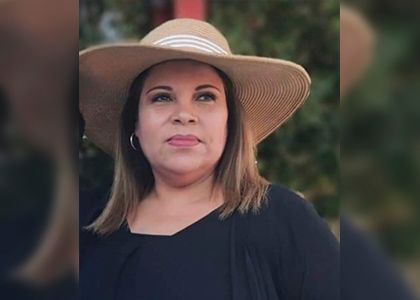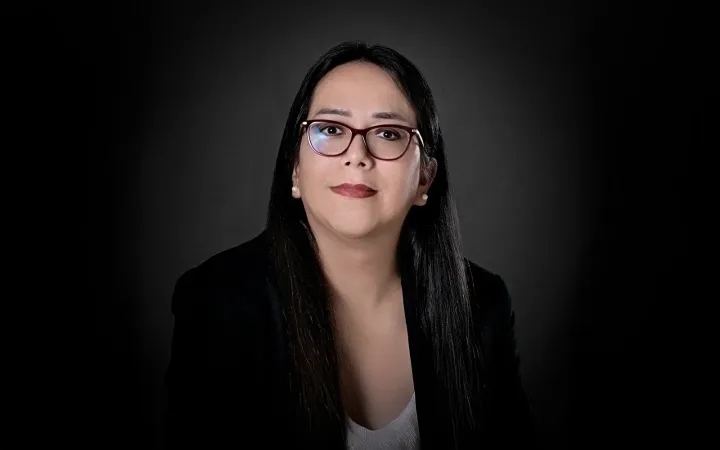
Por Rosario Mosso Castro*

Con casi dos décadas de impunidad acumulada en el tema de desapariciones, Baja California suma actualmente un promedio de siete personas desaparecidas por día. Mientras, el estado continúa sin integrar bases confiables de datos (ni de incidencia; ni de ADN de los familiares; ni de fosas clandestinas; ni de cuerpos no identificados localizados), un rasgo que comparten la mayoría de las entidades del país.
Las buenas noticias este 2023 se dieron en el presupuesto durante enero: finalmente la Fiscalía contrató un arqueólogo forense y anunciaron que se autorizó la compra de equipo para un laboratorio genético que permita en análisis de ADN nuclear, de ADN mitocondrial y un “Rapid Hit” los cuales permitirá abatir el rezago que acumula la FGE en dos años, dijeron. Pero ocho meses después, esto sigue en planes.
Fue en febrero del 2007 cuando Fernando Ocegueda Flores llegó a las oficinas de ZETA en Tijuana; se veía profundamente triste y dispuesto a todo, porque en la Procuraduría de Justicia lo ignoraron tras denunciar que el sábado 10 del mismo mes, un comando criminal armado había entrado a su casa y se había llevado violentamente a su hijo Fernando, de 23 años.
Hace 16 años, ese padre desesperado, convertido en investigador, sin protección se metió en lugares peligrosos en una Tijuana violentada por el narcotráfico. Indagó y se arriesgó, como se han sentido obligados a hacerlo otros familiares de desaparecidos a través de casi 20 años.
Tras la publicación del caso Ocegueda, más familias se animaron a hablar y se hicieron públicas historias de jóvenes que llevaban más de tres años desaparecidos. Así, las denuncias empezaron a acumularse y los números a danzar confusamente.
De acuerdo a cifras oficiales dadas por la Fiscalía a ZETA, entre 2008 y 2016 en Baja California se denunciaron un promedio de 490 privaciones al año; también entre 2013 y 2019 se acumularon nueve mil 640 reportes de desapariciones, de las cuales mil 400 personas no regresaron a casa, y de éstas, el 12 por ciento está relacionado con delitos.
Sólo en el año 2022 un total de dos mil 711 personas fueron reportadas como desaparecidas: el 37.05 por ciento fueron localizadas con vida y 77 (2.84 por ciento) personas sin vida; mientras mil 630 (60.10 por ciento) siguen desaparecidas. Solamente Tijuana tiene más de tres mil carpetas que continúan abiertas.
Entrevistado al iniciar el presente mes de agosto, el coordinador de la Unidad Especializada que incluye desaparecidos, Alejandro López, reconoció lo obvio: los cinco Ministerios Públicos, 14 auxiliares y 19 agentes asignados, son insuficientes.
Actualmente hay en Baja California, 22 colectivos de familias rastreando a sus desaparecidos, vivos y muertos, recibiendo información anónima, encontrando fosas y cadáveres.
Aunque la Fiscalía bajacaliforniana no tiene información abierta al acceso público, en marzo pasado respondió por transparencia a la agrupación Elementa DDHH; les reportaron que, del 1 de enero del 2009 a diciembre del 2022, se había localizado 281 cementerios clandestinos en los que encontraron 199 cadáveres y mil 162 osamentas y/o restos humanos. Los cuales, desde marzo pasado están siendo clasificados por el arqueólogo forense, a razón de siete expedientes por mes.
Tratándose de justicia, fue apenas en el año 2020 cuando el recién renunciado Fiscal General, Ricardo Carpio, siendo el titular de unidades especializadas en la misma FGE, decidió recurrir por primera vez al delito de desaparición forzada cometido por particulares contemplado en el Código Penal Federal.
Bajo esa acusación se detuvo al taxista Juan Manuel de Mateo Uribe tras probar que fue el último en ver con vida a Diana Piggeonountt, estudiante de preparatoria de 15 años, cuyo cuerpo lleva cinco años sin ser localizado. En noviembre del 2022 fue sentenciado a 56 años y seis meses de prisión y 725 mil 400 pesos como reparación del daño; esta última parte, por cierto, sigue sin concretarse en ningún caso.
A la fecha existen alrededor de 10 carpetas que se están judicializando de la misma manera de acuerdo a lo reportado por los colectivos, así de lento el laxo brazo de la Ley.
En estas condiciones, llega el Estado 29 a la conmemoración del doceavo Día Internacional de las Víctimas de Desapariciones Forzadas. Los colectivos siguen haciendo el trabajo del gobierno, buscando víctimas vivas y muertas, arriesgando su vida frente a los criminales, mientras reiteran -como lo han hecho por casi 16 años- el reclamo frente a una Fiscalía deficiente, para que los delincuentes que se llevaron o asesinaron a su gente, sean encontrados, juzgados y sentenciados.
*Rosario Mosso Castro. Editora General del Semanario ZETA en Baja California, dedicada al periodismo de investigación en ambientes hostiles, Premio a la Valentía en el Periodismo 2018 por la Fundación Internacional de Mujeres en los Medios (IWMF, por sus siglas en inglés).
Las opiniones expresadas son responsabilidad de sus autoras y son absolutamente independientes a la postura y línea editorial de Opinión 51.
Más de 150 opiniones a través de 100 columnistas te esperan por menos de un libro al mes.






Comments ()